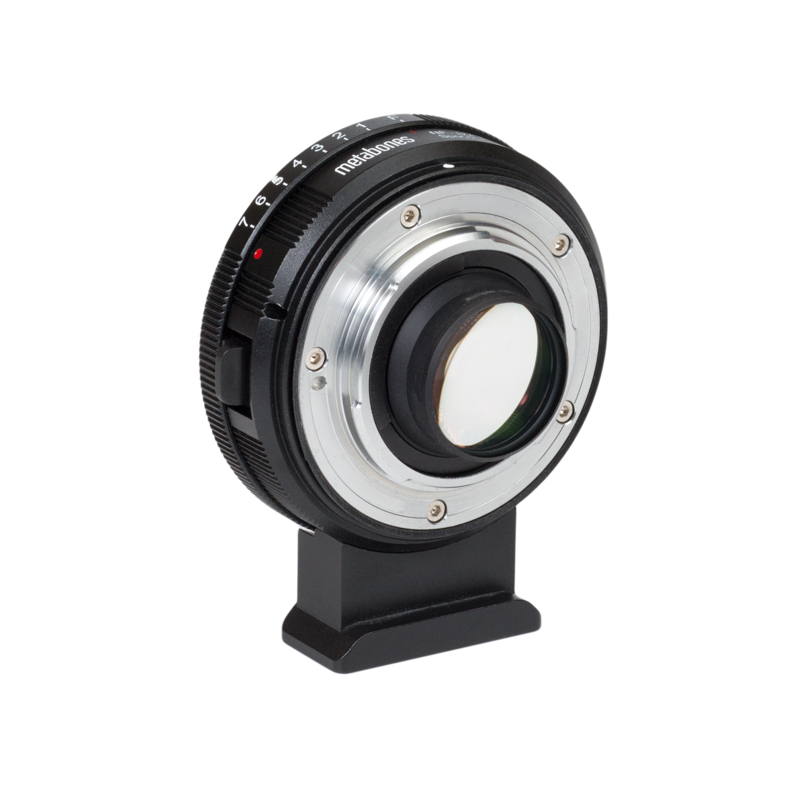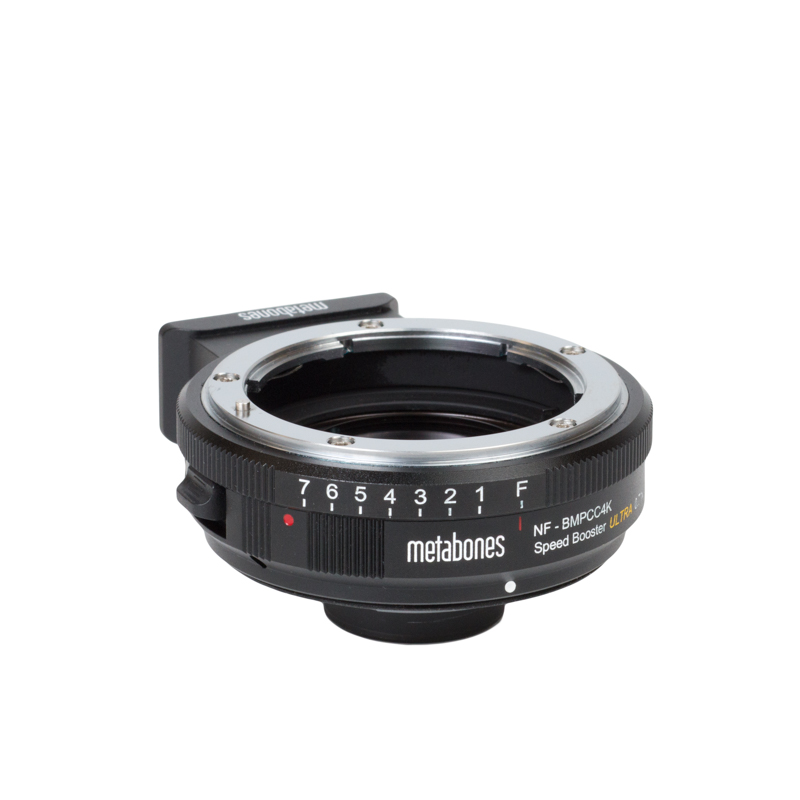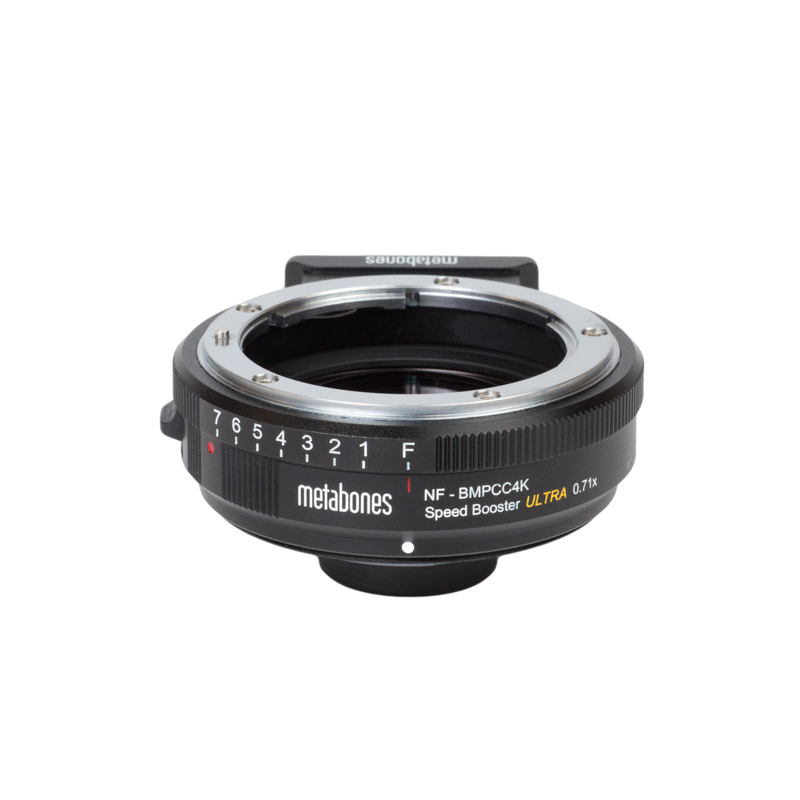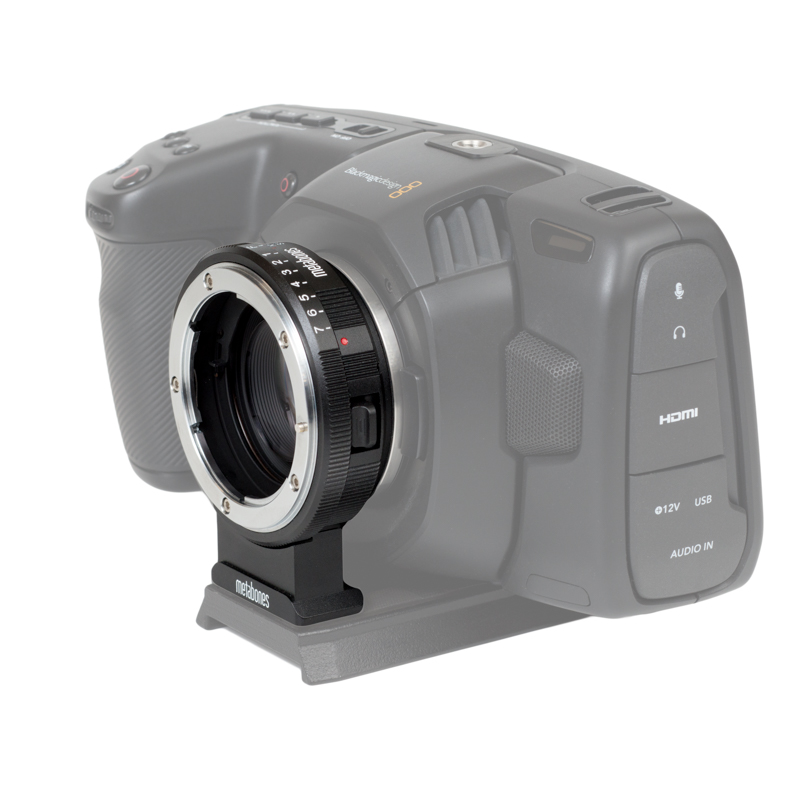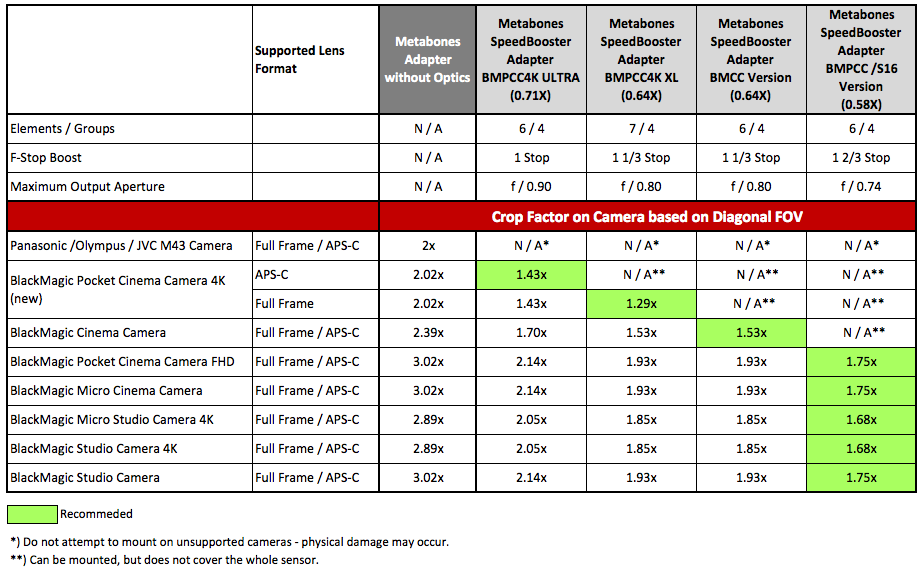Nikon G Lens to BMPCC4K Speed Booster® ULTRA 0.71x

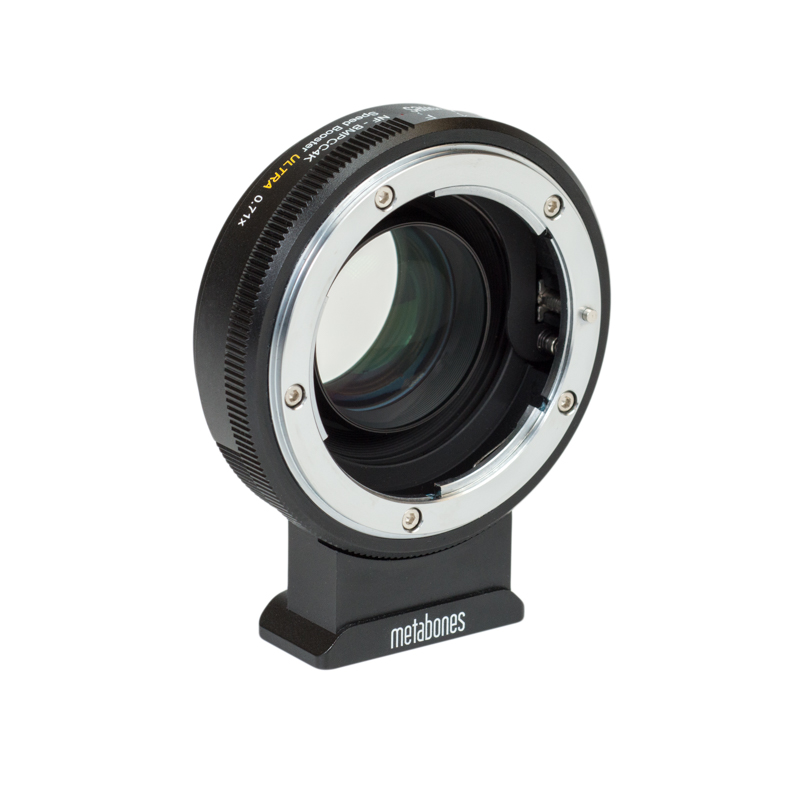
Key Features

- Nikon F mount lens to Blackmagic Design cameras with M43 mount, specific for BMPCC4K.
- Compatible with both Nikkor G lens & F lens (include non-AI & AI lens mounts).
- Patented 6-element/4-group optical design by Caldwell Photographic in the USA.
- Increase maximum aperture by 1-stop. (with a maximum output aperture of f/0.9).
- Increase MTF.
- Makes lens 0.71x wider.
- Industry's best aperture clickless ring covers an 8-stop range marking, clearly indicating actual number off-stops. No more guesswork. (Patent granted).
- Rubber gasket protects M43 mount connection from dust and moisture.
- Aluminum alloy and brass construction with chromium plating.
- Satin surface finish.
- Detachable tripod foot compatible with Arca Swiss Style ball head, such as Markins and Photo Clam or attach to quick release plate by a 1/4"-20 screw.
- The tripod foot is tailor-made to match the exact height as the BMPCC4K camera body.
|
Compatibility List of Camera |
|
|
Compatibility List of Lens |
include Nikkor G series, AF-D, AI-P, AIS, AI and non-AI lens only. |
|
Unsupported List |
|
Description

The BMPCC4K Speed Booster ULTRA 0.71x and XL 0.64x are similar to the standard M43 Speed Booster adapters (MB_SPNFG-m43-BM2 and MB_SPNFG-m43-BM3) but the optics have been re-designed to optimize for the filter stack thickness of 2.4mm found in Blackmagic cameras rather than the 4mm of a standard Micro Four Thirds.
Metabones Canon EF to BMPCC4K Speed Booster adapters are designed exclusively for Blackmagic Design Pocket Cinema Camera 4K (BMPCC4K). They cannot be attached to any other M43 cameras such as JVC, Olympus or Panasonic cameras.
The BMPCC4K Speed Booster ULTRA 0.71x reduces the crop factor of the BMPCC 4K camera from 2.02x to 1.43x and produces the largest aperture optics currently available, with a maximum output aperture of f/0.9.
Table of compatibility and resulting crop factors with different SpeedBooster:
< Click on the image to view in full size >
Remark: Your PayPal receipt is your order confirmation. There is no separate email confirmation until shipment takes place.
Disclaimer: we are NOT licensed, approved or endorsed by Micro Four Thirds or Nikon.
Why Metabones®?
Since its inception, Metabones has been designing and manufacturing lens adapters recognized among professionals and enthusiasts as leaders in design and workmanship.
Contrary to the popular trend of other factories using an aluminum ring painted black on the camera-body-side, we instead take no short-cut but use precision-machined brass with chromium plating on both the camera-body and the lens sides of our adapters, in order to ensure smooth mounting, great appearance, and durability. The lens side of the adapter features a strong leaf-spring structure, strengthening the adapter-lens connection and ensuring tightness of the lens in order to reduce wear and prevent focus errors and optical alignment issues from appearing.
Metabones uses matte-black treatment to keep internal reflection to a minimum in order to maintain the maximum optical quality possible with the lens.
All Metabones Adapters follow this tradition of uncompromising precision, robust build quality and outstanding finish. Our new Smart AdapterTM series of products add industry-leading electronic interfacing technology from Canada, with true electronic control of the lens' aperture directly from the camera body.
Features
- Both camera-side and lens-side of the adapter are made of brass, precision-machined and plated with chromium.
- Satin surface finish - just like your OEM lens and camera mounts.
- Precise fit and solid connection - lens has no play, gap or wiggling when mounted on adapter and no adjustments are required to fit your lens.
- Designed to reach infinity focus while maintaining the correct registration distance required to maintain optical quality of CRC lenses or lenses with floating elements.
Our Smart AdapterTM series adapters have the following additional features
- True electronic integration of aperture diaphragm - let camera automatically choose aperture in P or S exposure modes, or dial in yourself on the camera body in A or M modes.
- EXIF data such as lens identification, focal length and aperture.
